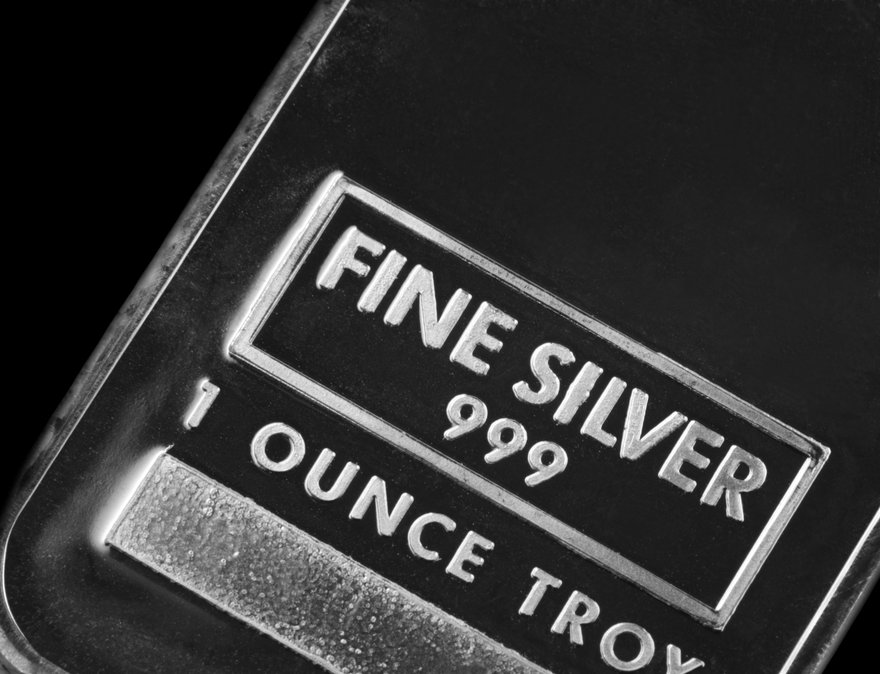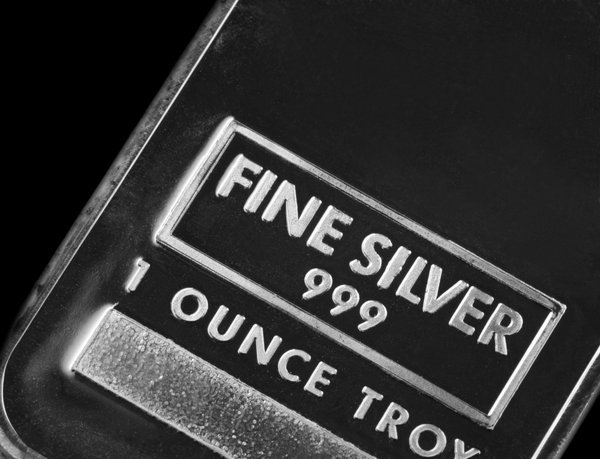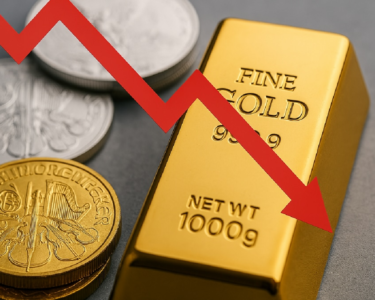Silver futures are legally binding contracts where someone agrees to buy silver at an agreed-upon date at some point in the future. Though investors can use them to speculate on silver price movements, they’re more commonly used by businesses to hedge against price fluctuations. For example, a manufacturer might buy silver futures as a hedge against price increases, or a mining company might sell futures contracts as a safeguard in case silver prices drop.
It’s possible to make money off silver futures, but it’s highly risky. We’ll explain how silver futures work and why they generally aren’t suitable for investors.

Image source: Getty Images.
How to invest
How can I invest in silver?
Silver is used to make jewelry, but it’s far more commonly used in the industrial sector. There are a few different ways to invest in silver.
Physical silver
Buying silver bars and coins is the simplest way to invest in silver, but it comes with the challenge of secure storage. Unlike stocks or funds, physical silver doesn’t generate income, like dividends. It sits there until you sell it, hopefully for a profit.
Silver stocks
Investing in silver stocks, such as shares of silver mining companies, lets investors benefit from rising silver prices. But the stock’s performance also depends on other factors, including company management. For example, a silver mining company struggling with debt or production issues could lose value even if silver prices rise.
Silver ETFs
Silver exchange-traded funds (ETFs) make it easy to invest in silver without worrying about storage or choosing individual stocks. Not all silver ETFs are the same, though.
Some silver ETFs invest in physical silver. These ETFs track the price of real silver stored in vaults. Others invest in companies that extract and refine silver, or they invest in a combination of physical silver and silver stocks.
Silver futures
Silver futures are contracts that let businesses agree to buy or sell silver at some point in the future. Though they’re often a hedging tool, investors and traders can use futures contracts to speculate on silver price movements.
Silver futures are standardized contracts traded on exchanges such as the COMEX (part of the CME Group). Each contract represents 5,000 troy ounces of silver, though micro silver futures offer a smaller contract size of 1,000 ounces.
Since futures use leverage, they can lead to big gains, or big losses, depending on how the market moves. You’ll only put down a small percentage of the contract’s value through a margin deposit. For example, if silver is trading at $25/ounce, a standard futures contract would cost $125,000 ($25*5,000 troy ounces), but you might only need an initial margin deposit of $10,000 to $14,000.
However, if the price moves against your position, you may face a margin call. You’d need to deposit additional funds — otherwise, your broker could liquidate your position, and you’d still be responsible for any amount you owe.
|
Scenario |
Silver Price |
Contract Value |
Profit/Loss |
|---|---|---|---|
|
Initial Investment |
$25/oz |
$125,000 |
— |
|
Silver Increases |
$27/oz |
$135,000 |
$10,000 |
|
Silver Decreases |
$23/oz |
$115,000 |
($10,000) |
Risks and benefits
Risks and benefits of silver futures
Pros of trading silver futures
Leverage: More exposure with less upfront cash
Silver futures offer exposure to large amounts of silver with a low initial margin deposit. If you had $10,000 to invest and bought physical silver at $25 per ounce, you’d only get 400 ounces.
However, with futures, that same $10,000 could give you exposure to 5,000 ounces, meaning the potential upside is magnified. If silver rises by just $1 per ounce, you’d make $5,000, whereas a physical silver investor would only gain $400.
However, the use of leverage makes silver futures extraordinarily risky. If silver prices dropped by just $2 per ounce, you’d be out your entire margin deposit. If prices dropped further, you’d lose even more than you initially deposited.
Liquidity: Buy and sell instantly
Unlike trading physical silver, which requires finding a buyer or seller, negotiating a deal, and dealing with storage and delivery, silver futures contracts trade on major exchanges like COMEX. Under this scenario, investors can trade silver futures with relative ease.
Diversification: A great hedge against the stock market
Metals like silver and gold are often seen as a hedge against inflation. However, they also have a weak correlation with the stock market. Because silver is widely used for industrial purposes, it’s more closely tied to the economic cycle than gold. Still, silver and silver futures can offer diversification if your portfolio primarily consists of assets like blue chip stocks and standard index-tracking ETFs.
Cons of trading silver futures
High volatility: Prices can swing wildly
Silver prices are influenced by inflation, mining supply, and global economic events. Because the global silver market is only a fraction of the gold market’s size, small changes in supply can lead to significant price volatility. Since it’s widely used in manufacturing, prices are also sensitive to changes in industrial demand.
In 2011, silver climbed to nearly $50 per ounce amid fears of inflation following the 2008 financial crisis. Within a few years, it crashed below $20, wiping out many overleveraged traders.
A trader expecting prices to keep rising might buy a contract at $45 only to see it collapse to $30, which can result in massive losses. Remember, trading futures and using leverage amplifies both gains and losses, so be careful not to overleverage.
Related investing topics
Margin risk: Be ready to put in money if prices go down
Trading silver futures requires only a fraction of the contract’s total value upfront, but as mentioned above, this also means losses can be amplified. If you put down $5,000 to control a $100,000 contract, you could face a margin call if silver prices drop by just 5%. This means you’d either need to add more funds to keep your position open or close it at a loss, potentially losing your entire margin deposit.
Expiration risk: Futures contracts don’t last forever
Unlike stocks, which you can hold indefinitely, silver futures expire. If you don’t close out or roll over the contract before the expiration date, you could be forced to deliver or accept delivery of 5,000 ounces of silver for a single contract, which could be a logistical nightmare.
FAQ
Silver futures FAQ
How do silver futures work?
Silver futures are contracts that allow businesses and traders to buy or sell a set amount of silver at a predetermined price on a future date using leverage to control larger positions with less capital.
Are silver futures suitable for beginners?
Silver futures are generally not recommended for beginners. Because silver futures rely on leverage, it’s possible to lose more than your initial margin deposit. Also, silver prices tend to be highly volatile, making it difficult to predict price movements.
What is the minimum investment required?
The minimum investment varies by contract size, but standard silver futures require an initial margin deposit of several thousand dollars, while micro silver futures offer lower-cost entry points.
What affects silver futures prices?
Silver futures prices are influenced by inflation, interest rates, industrial demand, mining supply, and geopolitical events. Silver prices often rise during periods of high inflation and at times when industrial demand is strong.
What is the difference between spot silver and silver futures?
Spot silver refers to the current market price for immediate delivery, while silver futures are contracts that lock in a price for delivery at a later date.




